Seamless Transition: Moving from Android to iPhone 11
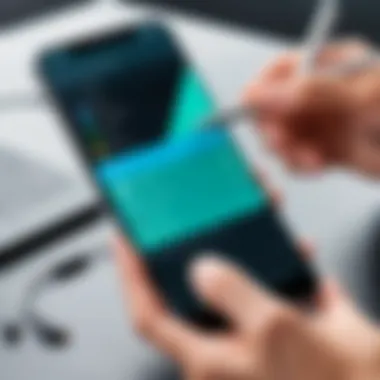
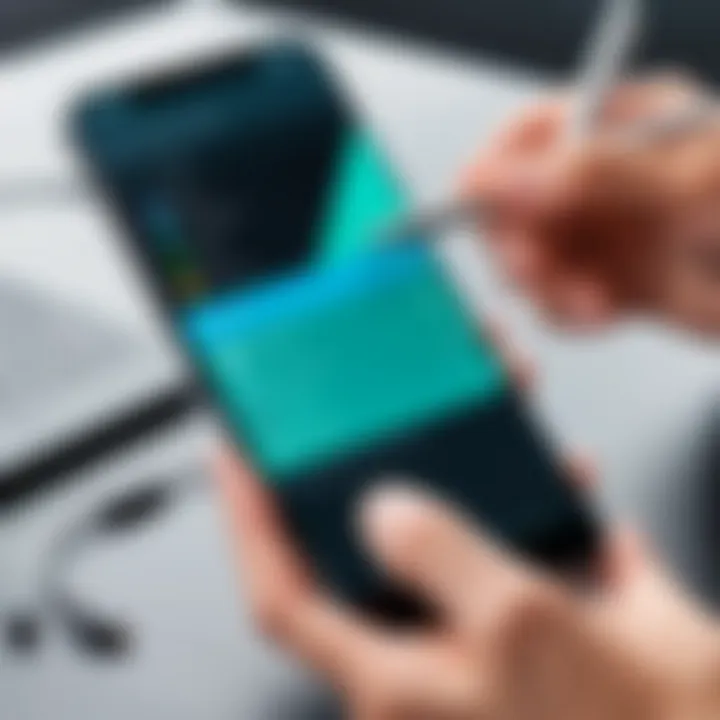
Intro
Transitioning from one mobile operating system to another can be daunting, especially when moving from Android to iPhone 11. The differences in user interface, data management, and application ecosystem require careful consideration. This guide aims to provide a structured approach to facilitate a smooth transition, enabling you to retain essential data while adopting new technology. By understanding the nuances of both Android and iPhone 11, users can make informed decisions throughout this process.
Overview of the Technology
Modern smartphones serve as powerful utility devices, but the technology behind them can often vary significantly. The iPhone 11, released by Apple, capitalizes on a unique ecosystem that distinguishes it from Android devices, integrating hardware and software seamlessly.
Key specifications
The iPhone 11 is powered by the A13 Bionic chip, renowned for its performance and energy efficiency. It features a 6.1-inch Liquid Retina HD display, which allows for vibrant visuals and sharp detail. Additionally, it has dual 12MP cameras, which significantly enhances photography capabilities in various lighting conditions. The device also supports Face ID for security and offers water resistance, ensuring durability in various environments.
Unique selling points
One of the main attractions to the iPhone 11 is its ecosystem. Users benefit from a wide range of interconnected services offered by Apple, such as iCloud, iMessage, and FaceTime. The seamless integration across devices enriches user experience and enhances productivity. Furthermore, the focus on privacy within Apple's software provides an extra layer of security for users.
Design and Build Quality
A device's design speaks volumes about its usability and functionality. The iPhone 11 presents an elegant silhouette, featuring durable materials that contribute to its aesthetic appeal and robustness.
Material used
Constructed with precision-engineered glass and aluminum, the iPhone 11 offers both visual allure and physical durability. The front and back glass support wireless charging, while the aluminum frame provides structural integrity, enhancing the device's grip and feel in hand.
Ergonomics and usability
The thoughtful ergonomics of the iPhone 11 cater to various user preferences. Weight distribution and form factor ensure that it fits comfortably in the palm. This aspect plays a significant role in daily usability, especially during prolonged usage.
"Understanding these core aspects ensures a more informed transition process, paving the way for effective adaptation to new technology."
In summary, the iPhone 11 not only delivers robust performance but also presents a ecosystem that encourages interaction and productivity. Transitioning away from Android involves understanding these elements to ensure that no crucial data is lost while you adapt to your new device.
Understanding the Transition
Transitioning from Android to iPhone 11 is a significant step for many users. Understanding this journey is crucial. Users need clarity on why they are changing their operating system. Every choice in technology has implications for daily life. Making informed decisions can reduce frustrations and enhance user experience.
The Motivation Behind Switching Operating Systems
There are various reasons why individuals choose to switch from Android to iPhone 11. For some, the desire for a more secure system drives the change. Apple's iOS is often viewed as having stronger security and privacy controls. Users may feel encouraged by brand reputation. Apple has successfully built an image of quality and exclusivity that many find appealing.
Another motivating factor is the ease of use often associated with iOS. The user interface tends to be more intuitive. Many users appreciate the consistency across the ecosystem of Apple devices. If someone owns a MacBook or an iPad, coordinating devices becomes simpler when adding an iPhone 11 into the mix.
The features of the iPhone 11 also play a significant role in the decision. Users might find the camera quality remarkable, or they may be attracted to unique features like Night Mode. Additionally, access to exclusive applications and services available only on iOS can serve as a strong pull.
Common Challenges Faced
Despite the motivation to switch, challenges are often present. One common issue is data transfer. Migrating data such as contacts, messages, and photos can be daunting. Users might worry about losing important information during the transition. Moreover, compatibility issues with certain apps can arise. Some applications available on Android may not have direct equivalents on iOS, leading to potential inconvenience.
New users may also struggle with adapting to a different operating system. Small nuances can cause confusion. For instance, the gesture navigation differs from the button style commonly found on Android devices. Adjusting to these changes takes time and can contribute to initial frustration.
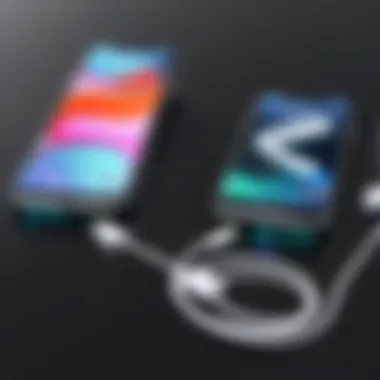
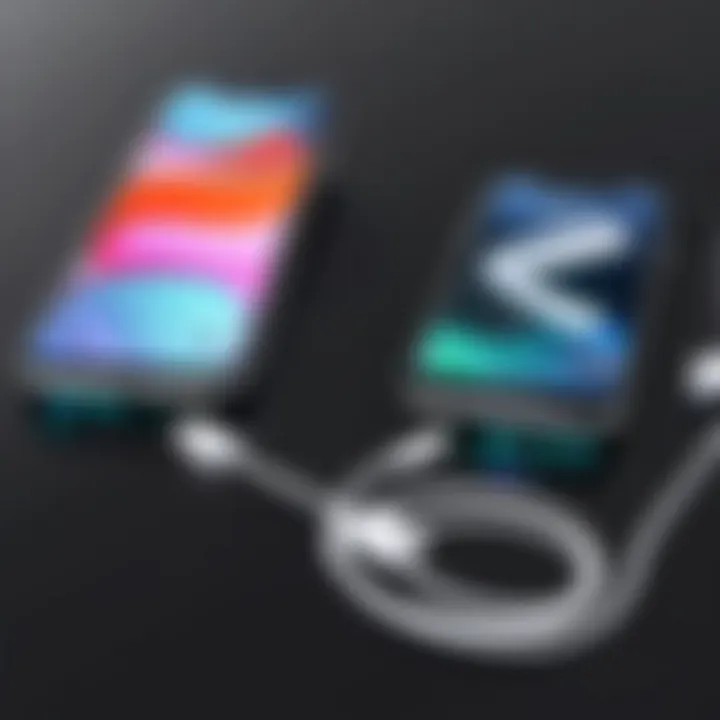
Lastly, financial considerations are very relevant. Transitioning to iPhone 11 usually requires a significant investment. Users must weigh the benefits against the costs to ensure they are making the right choice.
"Changing from one operating system to another is not just about the devices; it is about the way it reshapes daily digital experiences."
The transition process can feel overwhelming, but understanding the motivation and challenges upfront eases the shift significantly. Familiarity with both sides of the equation guides users toward smoother transitions. This proactive approach simplifies navigating through the complexities of switching operating systems.
Preparing Your Devices
Transitioning from Android to iPhone 11 can seem daunting. However, proper preparation is key to ensuring a smooth shift. Preparing your devices not only reduces the chances of complications during data transfer but also helps set the groundwork for using your new iPhone effectively. From updating software to backing up data, every step plays a crucial role in minimizing risks and enhancing user experience.
Updating Software on Both Devices
Before embarking on the transfer journey, it is essential to update both your Android device and your new iPhone 11. Keeping your Android device up-to-date ensures compatibility with the data transfer apps or methods you may choose to use. Software updates often fix bugs and improve performance, which is vital when dealing with sensitive information.
To update your Android device, follow these steps:
- Go to Settings.
- Scroll to System.
- Select System Update.
- Check for Updates.
For the iPhone 11, it is essential to ensure it runs the latest version of iOS. Usually, it will come with the most up-to-date version out of the box, but checking will provide peace of mind. Follow these steps:
- Open Settings.
- Go to General.
- Tap Software Update.
Keeping both devices updated mitigates the chances of unexpected issues during data transfer.
Backing Up Data from Android
Backing up data is a critical step when transitioning to a new device. Data loss is one of the primary fears when switching platforms. The goal is to ensure that all important information is safely stored before initiating the transfer. Android users can back up their data in several ways:
- Using Google Drive: This is the simplest method. You can automatically back up contacts, photos, calendar events, and even some app data. Simply go to Settings > Google > Backup.
- Manual Backup: For a more controlled approach, you can connect your device to a computer and save files directly onto it.
- Third-party Apps: Consider using apps like Helium or Samsung Smart Switch which can provide additional options for backing up data, especially for those who use specific brand devices.
This comprehensive backup ensures you won’t lose crucial contacts, photos, or messages during your transition.
Setting Up Your iPhone
After successfully backing up your Android data, the next step is to set up your iPhone 11. The initial setup is straightforward but can be tailored to fit your preferences:
- Power On your iPhone.
- Follow On-screen Instructions: Choose your language and region.
- Connect to Wi-Fi: Make sure to use a reliable Wi-Fi connection for better performance during the data transfer.
- Restore from Backup or Set Up as New: Here, you can choose to set your iPhone up as a new device or restore it from cloud services, provided you have already backed up your Android data elsewhere.
Make sure to also sign in to your Apple , which is crucial for using many of the iPhone’s features.
Following these steps will pave the way for a successful transition and ensure that your new device is ready to be populated with your personal data and preferences.
Methods for Data Transfer
Methods for data transfer are crucial for any user transitioning from an Android device to an iPhone 11. Understanding these methods can not only ease the transition but also minimize data loss. The importance lies in ensuring that personal data, such as contacts, messages, and photos, are successfully moved to the new device. This section delves into different options available for data transfer, highlighting their benefits and considerations. Picking the right method can enhance the user experience and ensure a smoother adjustment to iOS architecture.
Using the 'Move to iOS' Application
Downloading the App
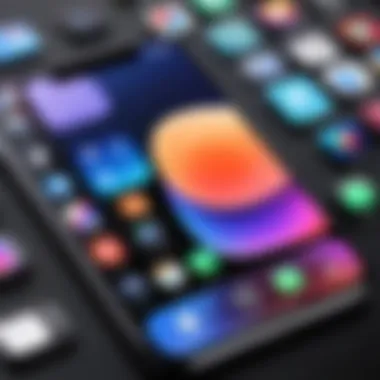
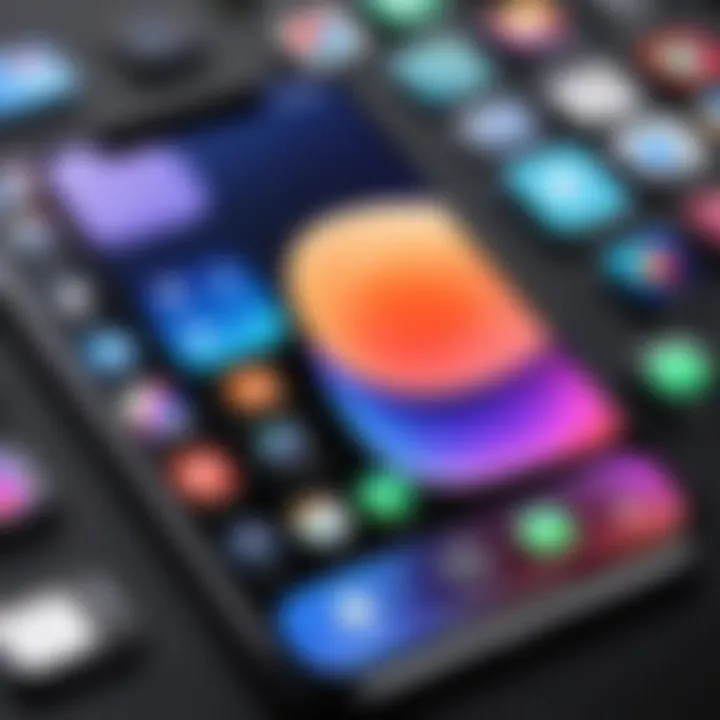
The 'Move to iOS' application is a pivotal tool in the transition process. It allows users to transfer data seamlessly from Android to iPhone 11. This app is specifically designed for this migration, which is a key characteristic that underscores its effectiveness. To download the app, simply visit the Google Play Store, search for "Move to iOS," and install it on your Android device. This application is popular due to its user-centric design and straightforward functionality. A unique feature of the app is its ability to connect directly to your iPhone's setup protocol, which simplifies the entire process. However, one disadvantage is that the app requires both devices to be on the same Wi-Fi network during the transfer.
Step-by-Step Transfer Process
The step-by-step transfer process using 'Move to iOS' features a systematic approach that contributes to its popularity. This method allows for the selective transfer of data such as contacts, message history, and photographs. Connecting the Android device to the new iPhone is intuitive and guided directly through on-screen instructions. A notable aspect is that this method often guarantees that all chosen data types are accurately transferred without significant errors. Though the process is typically reliable, interruptions in connectivity can lead to incomplete transfers, making it somewhat vulnerable to external factors.
Common Issues and Resolutions
Like any technology, using 'Move to iOS' can present challenges. Common issues involve connection failures and data that remains untransferred. Identifying these issues quickly is essential to a successful transition. The app allows you to troubleshoot common problems, such as ensuring both devices have sufficient battery life and are connecting to a stable network. One major advantage here is that Apple's support documentation provides potential fixes. However, resolving certain issues may require technical knowledge, posing a challenge for some users.
Manual Transfer via Google Account
Syncing Contacts and Calendars
Syncing contacts and calendars through a Google account is another effective method to ensure that vital information is not lost during the transition. This process involves logging into your Google account on the iPhone 11 to retrieve synced data. The key characteristic of this method is its convenience, allowing for the transfer of large amounts of data without manual input. This approach is beneficial since many Android users already rely on Google services. A potential disadvantage is some users may encounter limitations in non-Google applications, which might not support direct syncing.
Transferring Photos and Videos
Transferring photos and videos is an essential aspect of switching phones. This can be accomplished by using Google Photos. By uploading all media to Google Photos on Android, users can access this content on their new iPhone 11 through the app or browser. This method is well-regarded for its simplicity and efficiency, allowing the user to access media without needing complex migration solutions. A downside might be that users could unintentionally lose some resolution or quality if they choose not to upload in high quality.
Keeping Messages and Notes
Keeping messages and notes intact is critical for many users. While the direct transfer of texts from Android to iPhone is not seamless, there are alternative methods. Using third-party apps can help in migrating SMS data and notes. These tools often leverage cloud services for the transfer, which is convenient. A unique feature here is the ability to maintain the original format of messages. However, some users may find the need to purchase these applications a drawback, as it adds an additional cost to the transition process.
Utilizing Third-Party Software
Popular Third-Party Options
There are several third-party applications designed to assist with data migration between platforms. Popular options include AnyTrans and MobileTrans, which provide comprehensive solutions for transferring various data types such as messages, photos, and apps. Their adaptability makes them a noteworthy choice for users who require more flexibility than built-in methods offer. However, one should be aware of potential data privacy concerns when using such services.
Advantages and Disadvantages
The advantages of using third-party software include speed and the ability to transfer nearly all types of data. These applications often automate the process, making it user-friendly for those not inclined toward technical tasks. On the downside, not all software guarantees success. Some may impose limitations on the types of data transferred or require a premium fee for full functionality. Users should weigh these pros and cons carefully before deciding.
Installation and Setup Processes
Installation of third-party software tends to follow a straightforward setup process. Most applications require downloading additional software on both devices and enabling permission settings for accessing data. Many provide clear guidance throughout the installation. A key characteristic of these applications is that they are usually well-supported by user guides and customer service. However, frustrations can arise when the setup encounters unforeseen technical issues, which might deter less tech-savvy users.
Post-Transfer Adjustments
Post-transfer adjustments are crucial for anyone moving from Android to an iPhone 11. Successfully transferring data is just the initial step. After ensuring all your important information has arrived on your new device, it becomes essential to organize, adapt, and verify everything. Making these adjustments allows for a seamless experience and helps in maximizing the utility of the iPhone 11.
Organizing Data on iPhone
When transitioning, the layout and navigation may differ significantly between Android and iOS. Organizing data effectively enhances usability. First, check where your contacts, photos, and documents are located. iOS uses the Contacts app for contacts, while photos can be organized in the Photos app.
Structure your home screen by grouping similar applications. For example, create folders for social media, productivity, and entertainment apps. This can make accessing your most-used tools easier and foster a more personalized environment. Deleting unnecessary apps that did not transfer or are irrelevant can also help to streamline your digital workspace.
Moreover, sorting through your photos and videos to remove duplicates is beneficial. The iPhone 11's photo management system offers tools that allow for quick review and organization. Utilizing tags or albums can also bring order to your media.
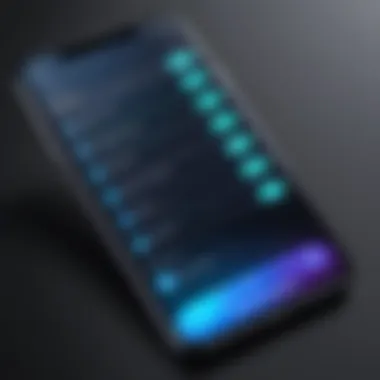
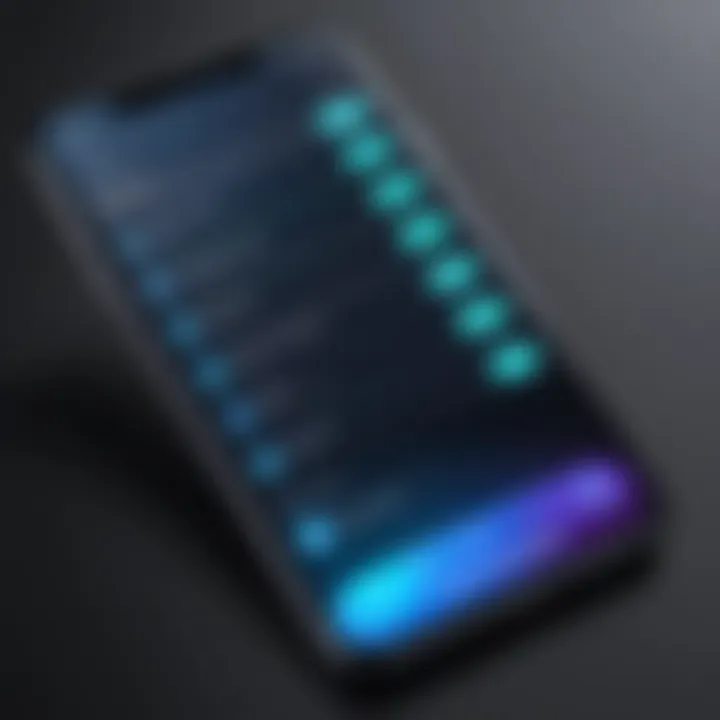
Handling Application Differences
The difference in applications between Android and iOS can be surprisingly jarring. Applications may not function the same way or even have different availability on the Apple App Store. Some Android apps will lack counterparts on iOS, while others may function differently or have different design interfaces.
Consider visiting the App Store to seek out alternative apps for your needs. Popular apps often have equivalents, such as Microsoft Outlook, Trello, or Evernote. Be prepared to invest time learning how to navigate essential applications anew. Familiarizing yourself with these apps will help alleviate frustration in daily tasks.
Furthermore, it's important to understand that some data might not transfer correctly. For example, WhatsApp conversations on Android may not easily transition to iPhone. This difference requires users to explore application-specific methods for ensuring critical information is preserved.
Verifying Data Integrity and Accessibility
Finally, verifying that your data has successfully transferred without compromising integrity is vital. Check for missing contacts, photos that did not transfer, or incomplete files. Use the iCloud service to manage backups. It’s important to set up iCloud to ensure continuous backups of your data. Regular checks will help catch any potential instability.
Data accessibility is also a major point of concern. If you've transferred photos or documents, ensure they are viewable and in the correct format. Sometimes, files transferred from Android may not open or display as intended on iOS. It is critical to test opened files across various apps, to confirm compatibility.
In line with this, ensuring that your applications are properly sync will help mitigate any accessibility issues. For instance, confirming that email accounts are linked to your Mail application on the iPhone 11 should be routine.
Post-transfer adjustments solidify the foundation for the smooth functioning of your iPhone 11. Taking proactive steps to organize, adapt, and verify will ultimately lead to better user satisfaction and a greater sense of confidence in your new device.
Potential Limitations of the Transfer Process
Transitioning from an Android device to an iPhone 11 can be a thrilling yet challenging experience. Understanding the potential limitations of the transfer process is crucial for a seamless transition. Various factors can affect the integrity and completeness of such transfers, impacting user expectations and satisfaction. This section delves into specific limitations, providing insights that may influence your decision-making while switching your mobile platform.
Data Loss Risks
One of the primary concerns when transferring data between operating systems is the risk of data loss. This can happen for several reasons, often stemming from incorrect transfer procedures or software limitations. Backing up your Android device is essential before starting the transfer process. This includes not just saving your contacts and photos but also ensuring your apps and app data are safely stored if they support backup options.
Make sure to verify that everything is successfully backed up. Common applications like Google Drive can help with this, but users must remain vigilant. Minor errors during transfer can result in missing photos, unsaved contacts, or incomplete app data. Always check whether important content, like text messages or notes, has transferred correctly.
Compatibility Issues with Certain Apps
Compatibility is another crucial issue that users often encounter when moving from Android to iOS. Not all apps available on Android are compatible with the iPhone 11. Some applications may not have a direct iOS counterpart, while others may require a different setup or subscription.
For example, certain gaming apps or niche applications may be exclusive to the Google Play Store. Even when the app exists on both platforms, the feature sets can differ significantly. Users need to explore alternatives or adjust their usage patterns, which can lead to frustration. As you prepare to make the switch, check the availability of your most-used applications on the Apple App Store.
Time Considerations During Transition
The time it takes to complete the transition should not be underestimated. Factors such as your data volume, the method of transfer chosen, and your familiarity with both operating systems can affect the timeline. While applications aimed at streamlining the process, like 'Move to iOS', can reduce time spent, they still require a stable internet connection and may encounter glitches.
For those with substantial data or files, the process can become painstakingly slow. Being prepared for potential delays can save frustration later.
In summary, fully investigating potential limitations can help set realistic expectations for the transition experience. It is advisable to remain aware of risks, compatibility issues, and time factors, ensuring a more manageable process overall.
Finale
The conclusion of this article serves not just as a wrap-up but also as a critical reflection on the process of transitioning from Android to iPhone 11. This shift is not merely technical; it represents a significant change in user experience, interface, and application ecosystem. Understanding the nuances involved in this transition equips users with the knowledge and confidence needed to navigate their new device effectively.
Recap of Key Transfer Points
When considering the transition, several key points deserve emphasis:
- Preparation is Key: Update both devices to ensure compatibility, and backup all essential data on the Android device. This ensures that you do not lose any files during the transfer.
- Data Transfer Methods: Utilize the 'Move to iOS' app for a seamless migration of data. If that option isn't viable, manual transfer or third-party options such as Smart Switch or AnyTrans can be used.
- Post-Transfer Steps: After transferring your data, take the time to organize your apps and files. Familiarize yourself with the differences in app functionality and where your data is stored.
- Stay Aware of Limitations: It's essential to understand that some data types might not transfer correctly, and certain apps from Android may not have direct equivalents on iOS. Knowing these limitations can reduce frustration during the transition.
Final Thoughts on iPhone Adaptation
Adaptation to a new operating system is often met with mixed feelings. Users may appreciate the design and functionality of the iPhone 11 but will also face a learning curve in navigating its features. Patience is crucial during this adjustment period.
- Embrace the Change: Take time to explore features unique to iOS. Familiarizing yourself with Apple's ecosystem can lead to an enhanced user experience.
- Utilize Available Resources: Apple's support resources are valuable in addressing questions and troubleshooting issues. Don’t hesitate to consult them when necessary.
- Community Support: Engaging in forums, such as Reddit, can provide practical advice from fellow users who have successfully made the switch. This can help ease the transition and provide additional tips on integrating iPhone 11 into your life.







